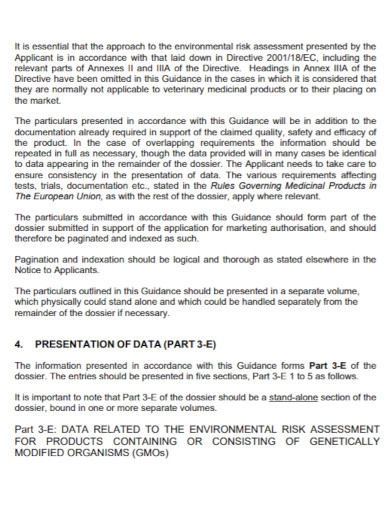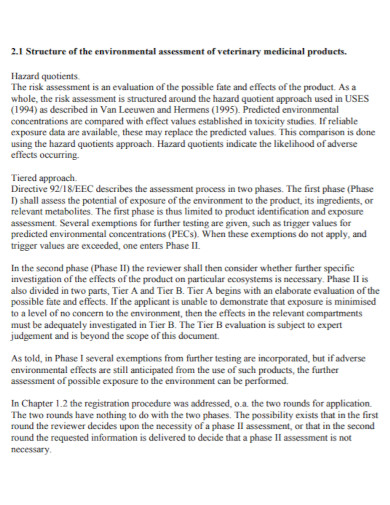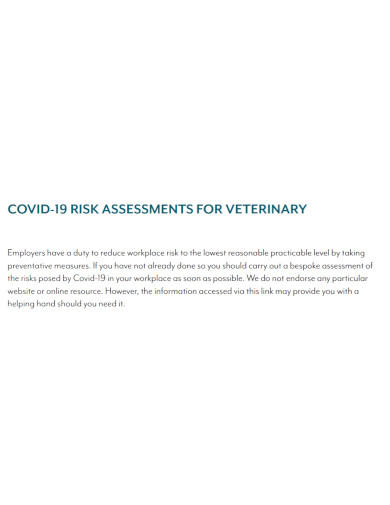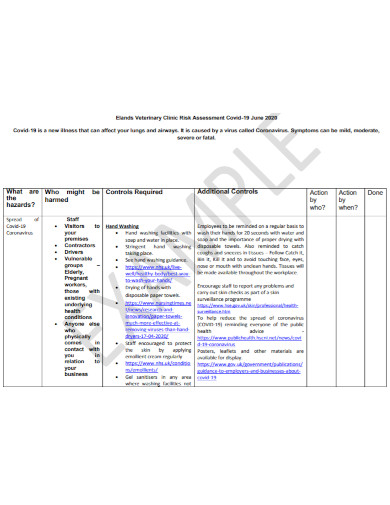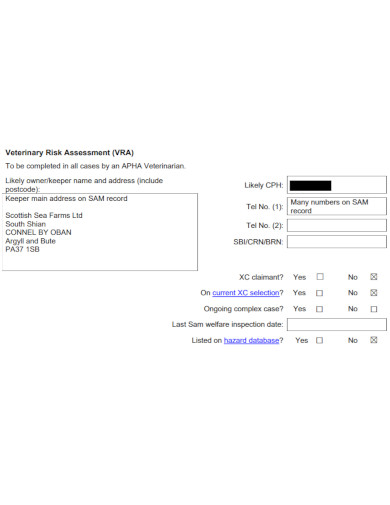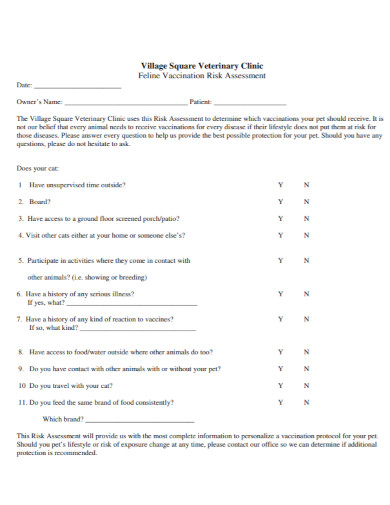8+ Veterinary Risk Assessment Examples to Download
Working with animals often comes off as a high risk for those who have experienced it. Whether you are a farmer, a rancher or even a vet, there is no denying that when you work with animals of any kind, there will sometimes be some risks that would eventually show itself. Safety should not be something that you take for granted. The reason a lot of people think that even working with animals can cause some risks, depending on the severity of it as well, is the fact that anything can happen.
With the global problem that many are currently facing right now, it even poses a higher risk for veterinarians to even work with animals. This is a good reason to even start a risk assessment. Just to be sure that the risks are minimal before the vet is able to work with animals and vice versa. With that being said, take a look at these examples of veterinary risk assessments.
8+ Veterinary Risk Assessment Examples
1. Veterinary Risk Assessment Template
2. Risk Assessment and Veterinary Medicines
3. Standard Veterinary Risk Assessment
4. Covid-19 Risk Assessment for Veterinary
5. Formal Veterinary Risk Assessment
6. Veterinary Clinic Risk Assessment
7. Basic Veterinary Risk Assessment
8. Veterinary Risk Assessment Format
9. Veterinary Vaccination Risk Assessment
What Is a Veterinary Risk Assessment?
A veterinary risk assessment is a type of assessment that is used in veterinary practice. This specific risk assessment is used in order to determine the severity of the risk that may befall in the location, the person, the equipment and of course the animal patients. In addition to that, a veterinary risk assessment also helps analyze, assess and to evaluate whether or not the place, the animal patients and of course the vet themselves are safe enough to operate on the place or not.
The whole purpose of the veterinary risk assessment is simply to figure out whether the severity of the risk would be solvable or not. Lastly, a veterinary risk assessment as it is mostly commonly used in veterinary practice does not only mean that someone may assess the situation, the location and the level of the risk, but it also hits on what type of risk they need to address and how to address it with little to no consequences.
How to Make a Veterinary Risk Assessment
Risk assessments are important and we all know the reason for it. Even or especially when you work with animals. A veterinary risk assessment is the most important thing to have in order to check on the level of the risk assessment. With that being said, take a look at these steps to making a veterinary risk assessment.
1. Set up a Goal for Your Risk Assessment
Make a goal when you want to make a veterinary risk assessment. The goal will help you maintain what kind of result you will be expecting and what kind of result you may have. Setting up the goal for your risk assessment helps you with understanding the steps to getting your assessment done.
2. Make a List of Possible Risks or Hazards
In order for it to be easier, make a list of the possible risks or hazards that you may come across. These risks or hazards can range from patients risks, location, equipment and the general risks. List them down, regardless if you believe that they can be a possible hazard.
3. Do Some Assessment and Tests
Moving on to the next step, you must make sure to complete the list. Because, once you have done the list, do some tests in the form of assessments. The tests and the assessments will come in handy, since you have to figure out whether or not these risks or hazards present are dangerous or severe, or they can be addressed immediately. Risks or hazards that are not addressed as soon as possible will pose even more of a risk as it affects your job.
4. Seek Out Results That Are Beneficial
Lastly, when you have finished your assessments and some other tests you may be doing, seek out positive and practical solutions that are beneficial for your veterinary risk assessment. The results and the solutions may vary according to the test results and the severity of the risk.
FAQs
What is a veterinary risk assessment?
A veterinary risk assessment is a kind of test or a kind of assessment test that veterinarians do in order to see if there are any risks or hazards that could affect their work and the people they work with.
How does a veterinary risk assessment help?
The purpose of a veterinary risk assessment is to assess the problems that may pose a threat. These threats are not something to be taken lightly.
What are ways to keep risks at bay?
To keep risks and different hazards away, it is always best to start a risk assessment. In order to see proof that these risks or hazards are present, the level of severity and a good solution to back it up.
It goes without saying, regardless of the job you may have, when working with animals, there will always be some risks that involve it. In order to address these kinds of issues, doing a veterinary risk assessment for your job is a great helping hand for you.


![8+ Veterinary Risk Assessment Examples [ Animals, Covid-19, Vaccination ]](https://images.examples.com/wp-content/uploads/2021/07/8-Veterinary-Risk-Assessment-Examples-Animals-Covid-19-Vaccination-.jpg)
